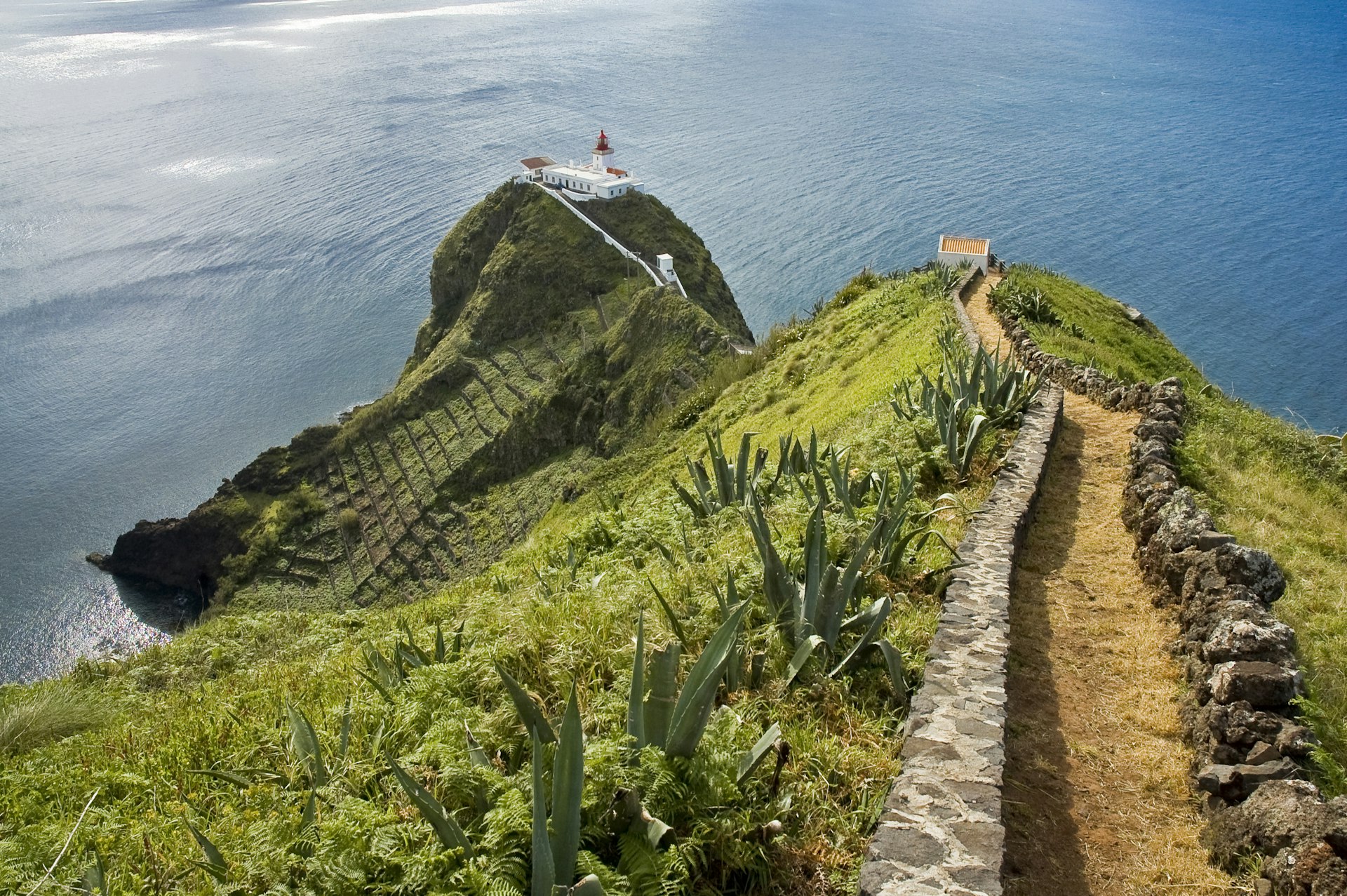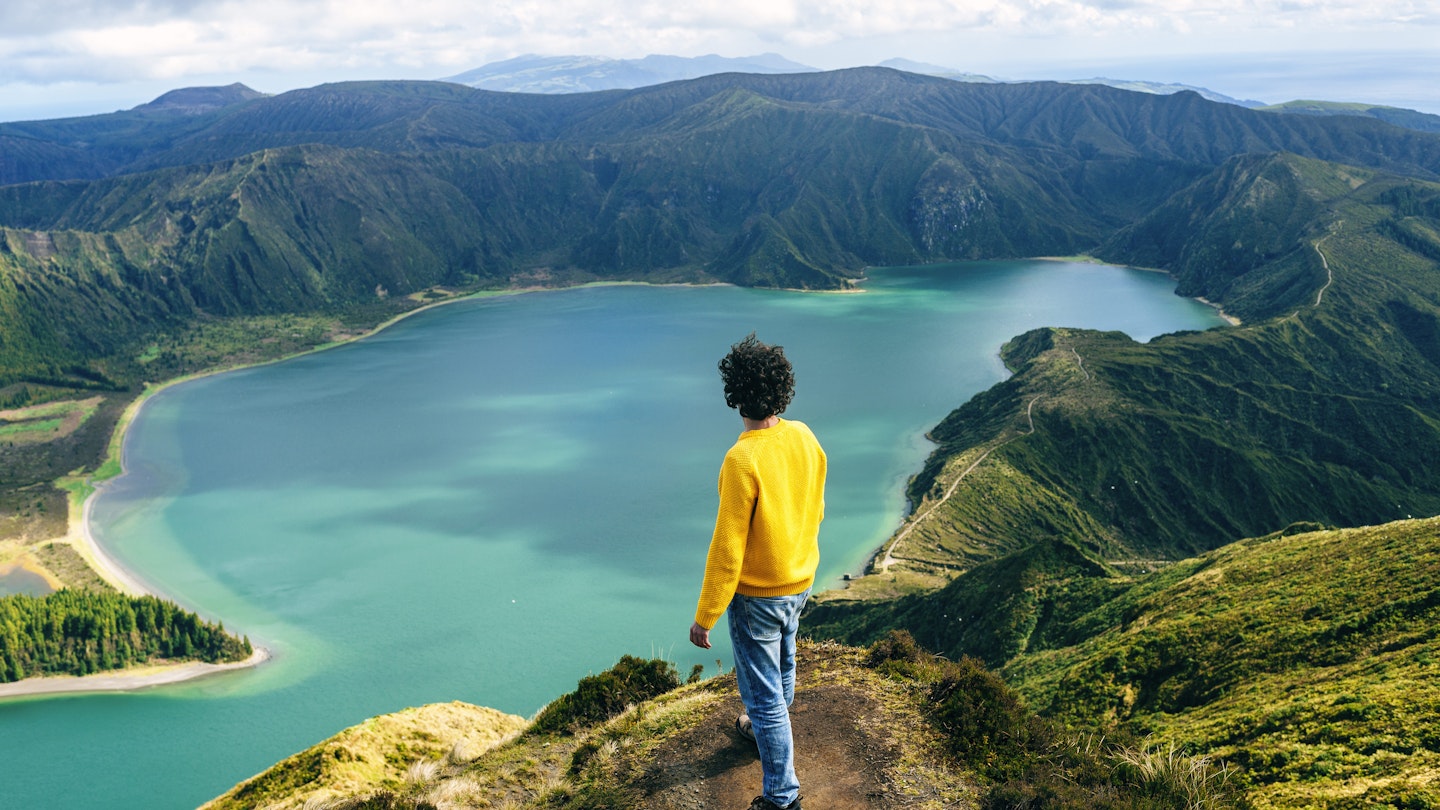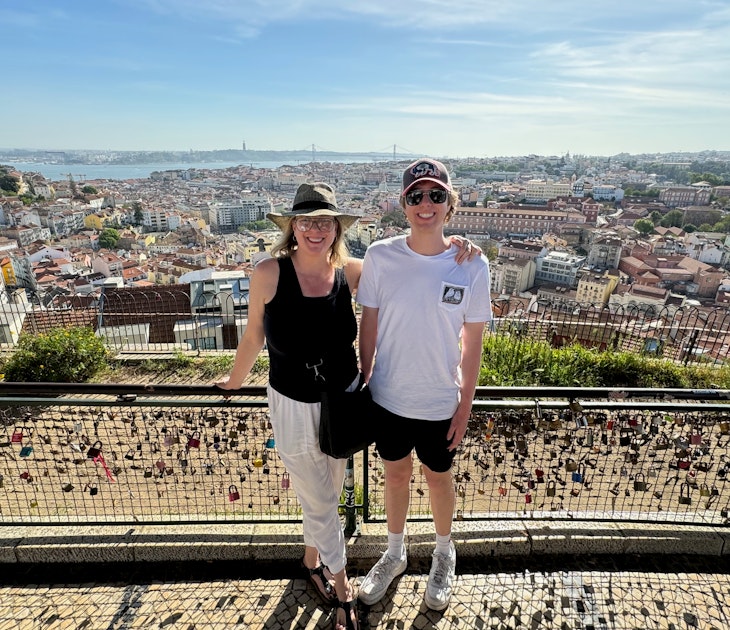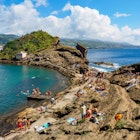Sandra has recently returned from her native Azores, where she was researching the upcoming Pocket Azores guidebook, out in October 2024. Here she shares her local knowledge of the archipelago to help you choose the best island for your trip.
Famous for hiking trails and lagoons, inactive volcanoes and whale watching, the Azores naturally appeal to the outdoorsy. But these islands are also rich with a unique cuisine, exceptional wines, vibrant cultural events and traditional celebrations.
The Azores keep growing in popularity as a tourist destination, but some islands remain off most travelers’ radar. Sure, a lot of this archipelago’s appeal comes from its beautiful landscapes, where nature is practically untouched yet not entirely out of reach. But the landscapes change from island to island, sometimes within the same one, which is why “seen one, seen them all” doesn’t apply here. Read on to find the perfect islands for your Azores adventure.

1. Santa Maria
Best island for summer festivals
Dubbed “the sunny island” by Azoreans, summers here see plenty of glorious days of beach weather – an oddity by Azores standards. But the promise of morning-to-evening days spent soaking up the sun and the salt of the ocean isn’t the only reason why travellers flock here during the summer months. On my early morning and practically empty flight to Santa Maria, on a late-January weekday, most of my fellow passengers were locals returning home or going on a business trip.
In mid-July, the village of Anjos welcomes blues fans to the three-day festival Santa Maria Blues. Then, at the end of August, Praia Formosa becomes the epicenter and main stage of Maré de Agosto, Portugal’s oldest music festival, turning 40 in 2024. Marienses (Santa Maria residents) certainly know how to put on a memorable show.
Read more: All you need to know for your first trip to the Azores

2. São Miguel
Best island for things to do
The largest island, São Miguel gets the most tourists and has frequent flights from various destinations two to five hours away. For many visitors it's a good compromise between spending time on a remote island but without feeling like you’re too far away from home.
Here, you can spend the morning discovering lagoons in Sete Cidades, then while away the afternoon soaking in a thermal bath heated by an underground volcano in Furnas. In the evening you can sample international cuisine and discover local artists at O Quarteirão, a neighborhood in the historic center of the island’s capital, Ponta Delgada.
And on one of those pesky rainy days, when sightseeing goes out the window, stroll around the shopping center or catch a movie.
Read more: How to get the most out of the Azores without renting a car

3. Terceira
Best island for culture
Terceira has a certain majestic quality – perhaps a trace of its former life as the heart of the Portuguese Kingdom. The celebration of local heritage is strong here, from the dozens of carefully kept, colorful impérios (small temples built to display symbols of the Cult of the Holy Spirit) that dot every village and town on the island, to the cobblestoned streets of Angra do Heroísmo’s historic center, the first UNESCO World Heritage Site in Portugal.
The island has birthed notable intellectuals, artists and writers. But there is room for less highbrow cultural manifestations, including the sarcasm-riddled song and dance shows called Bailinhos during Carnaval, and the live music and street parades during Sanjoaninas in June.

4. Graciosa
Best island to visit with family
Graciosa is one of the least touristy islands. On the surface, the second smallest island in the archipelago seems to have little to do – by comparison with the rest, of course. But this UNESCO Biosphere Reserve doesn’t need to flaunt deep lagoons and waterfalls to get your attention.
In half a day, you can drive around the island and hit all the must-see spots, and locals will state this fact to you. But it’s perfect if you’re traveling with younger kids who get fussy on long drives. The road trip includes spotting a whale-shaped rock off the coast, entirely molded by nature. You can even take them on an adventure, walking down a stone spiral staircase into the heart of Graciosa’s inactive volcano, Caldeira (or Furna do Enxofre).
The island is also home to burro da Graciosa, an endangered species of donkey that has been rescued, protected and bred by a local nonprofit organization. Anyone can visit the farm to see the donkeys from afar, or pet them if they come closer to the fence.
Local tip: Graciosa is famous for its red-roofed, Dutch-style windmills. Most of them are no longer operational and have been turned into short-term rental houses by their owners.

5. São Jorge
Best island for hiking
Whether you arrive on the island by sea or by air, São Jorge resembles the scaly back of an enormous dragon fast asleep in the middle of the ocean. On this long and narrow island, most towns and villages are wedged between the sea and steep cliffs on volcanic ground that slid down the coast and formed fajãs (coastal plateaus).
Even though some of these fajãs can be reached by car, being able to get to them as locals did in the old days, via official trekking trails, makes São Jorge the best island for hiking.
Local tip: Given the island’s rough terrain, all official trails on São Jorge range from moderate to hard, which require some hiking experience. Trekking boots and poles are recommended for a safe and comfortable hike.
Read more: Discover the 7 best hikes in the Azores

6. Pico
Best island for local heritage
Called “the mountain island” for being home to Portugal’s highest peak, Pico is also historically a land of whale hunters and winemakers.
Watching whales took over from hunting them in the mid-1980s, with plenty of former hunters teaching whale-watching companies all they knew about the mammals and how to track them. You’ll see the former industry presented at museums and old processing factories. Today, whale-watching tours have become one of the most popular activities on Pico.
Producing wine from vines that grow on volcanic soils, sheltered from the wind and the ocean by basalt rock walls, proves that picoenses (Pico residents) are ingenious. The winemaking industry is currently reaping the fruits of a renaissance on the island, with the Landscape of the Pico Island Vineyard Culture becoming recognized by UNESCO in 2004.
Local tip: Regular, year-round ferry rides connecting Faial, Pico, and São Jorge – also known as the “Triangle Islands” – mean that island-hopping between the three is easy. While the tendency is to stay on Faial (partly because of flight frequency), Pico is a better island to use as a base – Madalena on Pico is a 30-minute ferry ride from Horta on Faial; São Roque on Pico is 50 minutes from Velas on São Jorge.

7. Faial
Island with the best beaches
On most islands in the Azores, natural swimming pools outnumber sandy beaches, and Faial is no exception, with five beaches to its seven natural pools. The cool Atlantic waters (sometimes even in the summer) also don’t exactly pinpoint the islands on the map of best beach destinations. Nevertheless, Faial’s stretches of sand are worth visiting.
Praia do Almoxarife is hands down the beach with the best view. Imagine lounging on the black sand or taking a dip while looking across the water at Portugal’s highest peak, Mt Pico.
Praia de Porto Pim is a local favorite within walking distance of Horta city center. The proximity to an urban area doesn’t taint the beach-going experience at all, and the bay is like a shelter.

8. Flores
Best island for untouched nature
Most people who visit Flores believe that this is the most beautiful island in the Azores, comparing it to such destinations as Hawaii, Switzerland, and Ireland.
The evergreen island has dozens of waterfalls cascading down vertiginous cliffs into the ocean or into ponds of fresh water, seven lagoons nestled in the pits of collapsed volcano craters and a rugged coast hiding caves and tales of pirates – and only a handful of these delights are within human reach.
Local tip: When the weather turns unexpectedly on Flores, locals have a fun saying: “Here today, tomorrow in Flores.” Granted, stressed travellers may miss the irony in this tidbit of local wisdom when they begin to foresee the domino effect of cancelled flights. If you’re staying three days on Flores, give yourself some leeway and plan for two extra days of traveling time – don't book connecting flights for the same day you plan to arrive on or leave Flores.

9. Corvo
Best island to relax
With no noise, no traffic (well, hardly any cars, for that matter), no pollution, and no fuss, Corvo, the smallest of the nine islands, is perfect for unplugging and recharging.
Walking the maze of narrow cobblestoned streets that cut through impossibly close houses and patios that once protected corvinos (Corvo residents) from harsh winds and pirate invasions does make you believe that if you can make it here, you can make it anywhere. And these islanders have been making a life here for four centuries.
Local tip: Most people hop here on a boat from Flores, do a quick tour around town and visit the volcano Caldeirão. But to fully experience life on the most remote island in the Azores, plan your trip to account for a one-night stay (at least) on Corvo.












